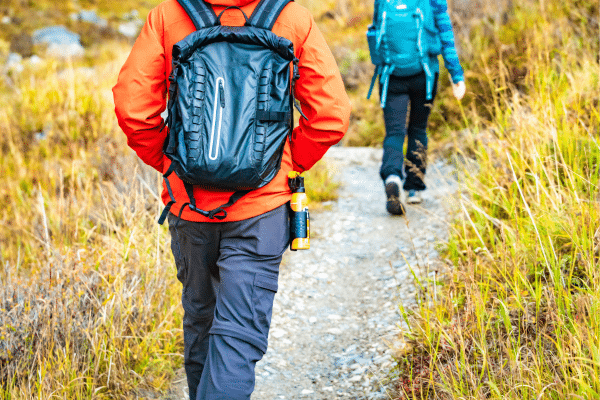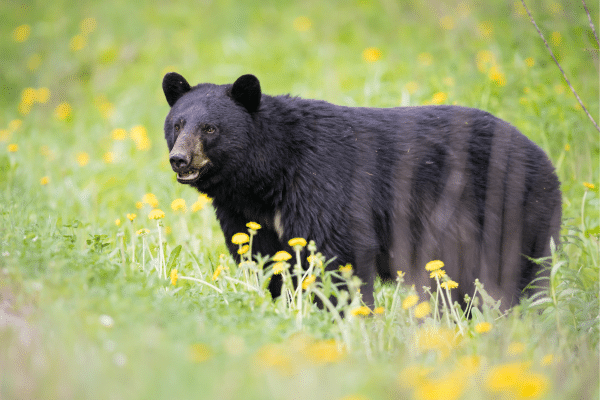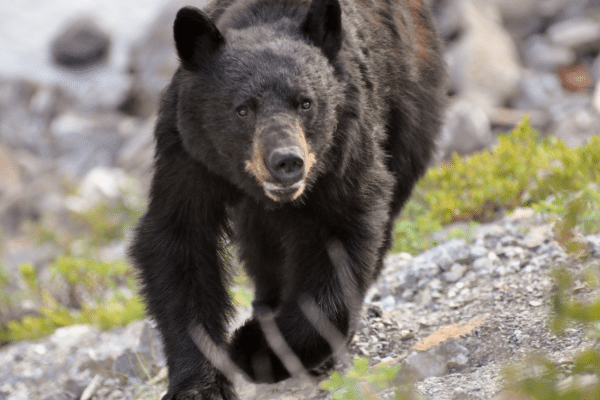Encountering a bear in the wilderness can be an awe-inspiring yet potentially dangerous experience. This guide provides essential steps for safety and survival, emphasizing respect for these majestic creatures and the importance of preparation. Knowledge of bear behavior, preventive measures, and appropriate reactions can greatly reduce the risks associated with bear encounters. Whether hiking, camping, or simply exploring areas where bears are known to roam, understanding how to coexist safely with these animals is crucial for protecting both humans and bears. This comprehensive approach ensures that any encounter with these wild inhabitants remains a memorable experience for the right reasons.
Contents
Understanding Bear Behavior

Bears are complex animals with behaviors that can often be misinterpreted by those unfamiliar with their habits. Recognizing the signs of a bear’s discomfort, such as huffing, stomping, or swaying, is crucial for assessing the situation accurately. These behaviors indicate that a bear feels threatened and is asking for more space. Knowledge of these signals and an understanding of bear body language can guide individuals in making informed decisions during an encounter, such as whether to slowly back away or prepare for more defensive measures.
In bear habitats, human visitors must be aware of the seasonal and daily patterns that influence bear activities. During certain times of the year, such as when bears are foraging for food after hibernation or when females are with cubs, bears can be more sensitive to disturbances. Understanding these patterns can help in planning outdoor activities to avoid interactions with bears. Moreover, being aware of the environment and making noise while moving through dense vegetation can alert bears to human presence, allowing them to move away before a close encounter occurs.
Preventive Measures Before Encountering Bears

Taking preventive measures can significantly minimize the likelihood of encountering bears. Researching the area and familiarizing oneself with the types of bears present and their behaviors is a critical first step. Carrying and knowing how to effectively use bear spray provides a defense in the event of an encounter. Properly managing food and waste by using bear-proof containers and techniques to store these items is essential in not attracting bears to human-occupied areas.
Creating noise while moving through bear territories serves as an effective deterrent, preventing surprise encounters that can lead to aggressive bear behavior. Whether by talking loudly, singing, or using bear bells, the objective is to make one’s presence known. Bears typically prefer to avoid humans, and by announcing human presence, bears are given the opportunity to retreat. Additionally, staying on designated trails and avoiding hiking at dawn, dusk, or night when bears are most active can further reduce the chances of coming face-to-face with a bear.
Dealing With A Close Encounter

In the event of a close encounter, maintaining a calm demeanor is paramount. Speaking in a calm, steady voice allows the bear to identify you as human, not prey. Bears may approach out of curiosity, not aggression, so making slow movements and giving the bear plenty of space to leave is essential. The use of bear spray should be a last resort, only if a bear becomes aggressive. Understanding the effective range and how to deploy bear spray can prevent a dangerous situation from escalating.
If a bear stands its ground or follows you, it’s important to avoid running or making sudden movements, which can trigger a chase response. Instead, continue facing the bear and slowly back away, keeping your eyes on the animal without making direct eye contact. In cases where a bear is blocking your path, find an alternate route, giving the bear a wide berth. Demonstrating no threat to the bear or its territory encourages the bear to move on, allowing you to safely retreat.
If A Bear Charges

In the rare instance that a bear charges, it’s crucial to understand the nature of the charge. Many bear charges are bluffs, intended to test or intimidate without making contact. Standing your ground may seem counterintuitive, but it is often the best response to a bluff charge. Dropping to the ground in a fetal position and protecting your neck with your hands should only be done if contact is imminent, as it signals submission and a lack of threat to the bear.
However, if the bear makes contact, fighting back is recommended in the case of black bears. For brown or grizzly bears, playing dead—lying flat on your stomach, spreading your legs to make it harder for the bear to turn you over, and covering your neck and head—can signal to the bear that you are not a threat. Bear behavior varies significantly between species, and knowing the appropriate response can be life-saving. Bear encounters that escalate to this level are extremely rare, especially when preventive measures are taken.
After An Encounter

Once a bear encounter has concluded, it’s important to leave the area calmly and promptly. Avoid running, as this could trigger a chase response. After putting distance between yourself and the bear, assess the situation and plan to avoid such encounters in the future. Reporting the encounter to park rangers or wildlife officials can help them manage bear populations and inform other visitors of the bear’s presence, contributing to the safety of all parties involved.
Reflecting on the encounter to understand what might have attracted the bear can provide valuable insights for future outdoor activities. Whether it was the smell of food, the presence of garbage, or simply being in the wrong place at the wrong time, learning from the experience is crucial. This reflection can lead to better preparedness and prevention strategies, reducing the likelihood of future encounters.
Educating Others

Sharing knowledge and experiences with others plays a crucial role in bear safety. Education on bear behavior, effective preventive measures, and appropriate responses to encounters can significantly reduce the number of negative interactions. Workshops, informational websites, and community meetings can be effective platforms for spreading awareness. The goal is to foster a respectful coexistence between humans and bears, ensuring the safety of both.
Educational efforts should emphasize the importance of respecting wildlife and the natural environment. Promoting responsible outdoor practices, such as proper food storage, waste management, and awareness of one’s surroundings, can help protect both the wilderness and its inhabitants. By educating others, the community as a whole becomes better equipped to navigate bear country safely.
The Bottom Line
Bear encounters, while potentially dangerous, can be managed safely with proper knowledge and preparation. Understanding bear behavior, taking preventive measures, and knowing how to react during an encounter are essential skills for anyone venturing into bear country. Reflecting on and sharing experiences can further enhance safety for all. Ultimately, the goal is to respect these magnificent creatures and their habitats, ensuring that future generations can continue to experience the wonder of encountering bears in the wild. By fostering awareness and promoting coexistence, the balance between human activity and wildlife conservation can be maintained.


